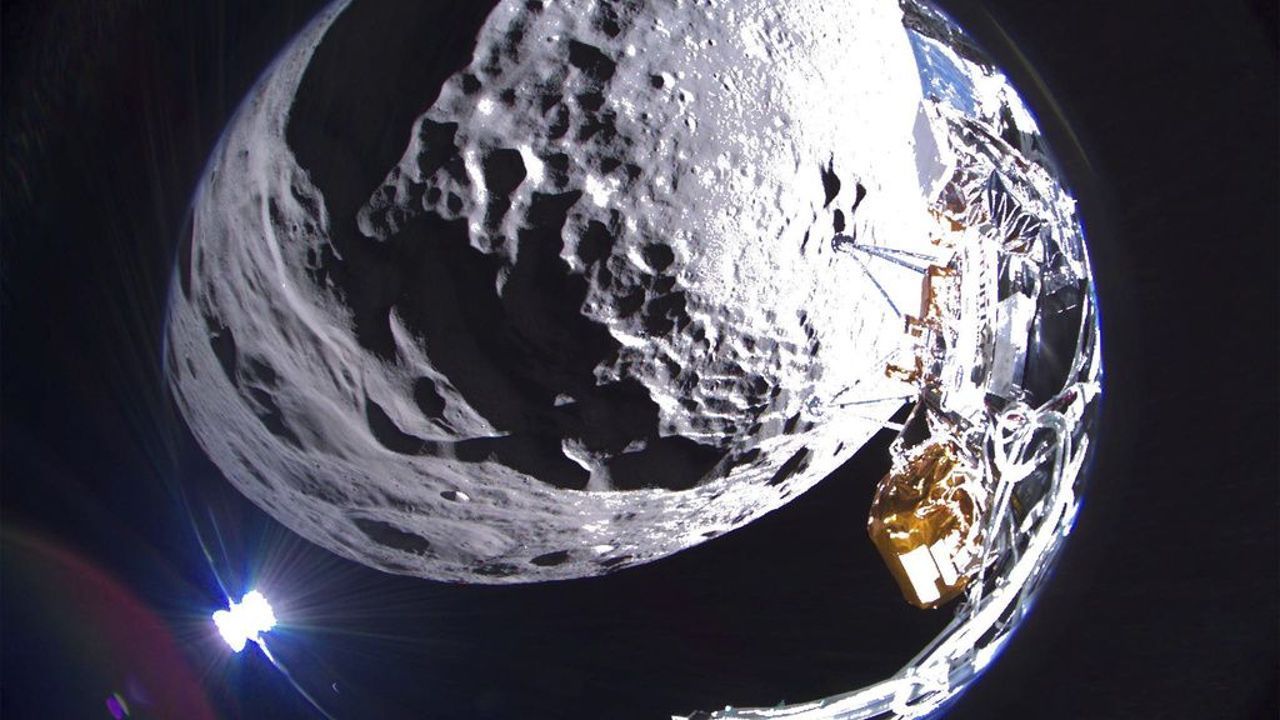Odysseus Spacecraft's lunar landing marks milestone with unexpected twist
Odysseus spacecraft, first American lunar mission since Apollo era, makes historic landing near the Moon's south pole. However, spacecraft is likely resting on its side

In a landmark event for space exploration, the Odysseus spacecraft, the first American lunar mission since the Apollo era, achieved a dramatic landing near the Moon's south pole on Thursday. However, the historic moment came with an unexpected turn: the spacecraft is likely resting on its side, according to Intuitive Machines, the private company behind this pioneering venture.
The uncrewed robot touched down at 6:23 pm Eastern Time, marking a suspense-filled finale to its descent. Ground control teams had to switch to a backup guidance system during the final moments, and it took several minutes to establish radio contact after Odysseus settled on the lunar surface.
Initial reports from Intuitive Machines suggested the hexagonal spacecraft landed upright. However, CEO Steve Altemus clarified on Friday that this assessment was based on misinterpreted data. It seems the spacecraft caught on the lunar surface, tipping over to rest horizontally, a situation that slightly dims the glow of an otherwise historic achievement.
Despite this setback, the mission represents a significant success. Odysseus is the first spacecraft from a private company to land on the Moon, a feat previously accomplished only by national space agencies. This mission is part of NASA's broader initiative to involve private industry in lunar exploration, aiming to pave the way for American astronauts' return to the Moon under the Artemis program.
The landing did face its challenges. The spacecraft's navigation technology encountered issues, prompting ground engineers to implement a makeshift solution by switching to an experimental NASA laser guidance system. Additionally, a misstep involving a laser system that failed to activate due to an unflipped safety switch was acknowledged by Altemus as an oversight.
Despite these hurdles, the landing is a testament to the ingenuity and resilience of the team behind Odysseus. The spacecraft's solar arrays, positioned on its top side, are functional, but its downward-facing antennas are complicating data transmission back to Earth. Efforts are ongoing to download data and surface photos, with the hope that NASA's Lunar Reconnaissance Orbiter will provide additional insights over the weekend.
The mission has broader implications for space exploration. NASA invested $118 million in Intuitive Machines to transport six experiments to the Moon, reflecting a strategy to leverage private sector capabilities for cost savings and to foster a lunar economy. Odysseus also carries commercial cargo, including innovative materials designed to protect its cryogenic propulsion tank.
Looking ahead, the United States and its international partners are eyeing the Moon's south pole for long-term habitation, utilizing local resources for sustainability and further space ventures, including missions to Mars. The Artemis program aims for a crewed lunar landing by 2026, setting the stage for renewed competition in space exploration, with China also planning a manned Moon mission by 2030.
Source: Newsroom







